iRobot Bundle
Who Really Owns iRobot?
The failed iRobot SWOT Analysis acquisition by Amazon in early 2024 sent shockwaves through the tech world, raising crucial questions about the company's future and, most importantly, its ownership. Understanding who owns iRobot is vital, as it directly impacts the company's strategic direction, market performance, and shareholder value. This detailed analysis explores the iRobot company ownership, from its roots to its current status as a publicly traded entity.
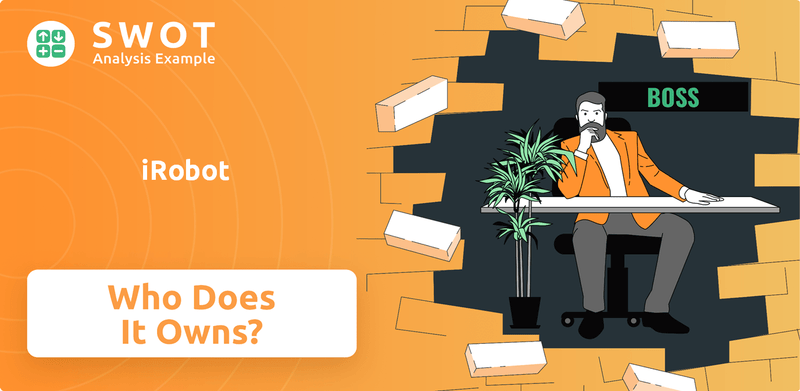
As of June 2025, the iRobot owner landscape is quite different from what many anticipated, especially after the scrapped iRobot acquisition. This article will explore the iRobot company ownership structure, including major shareholders, the influence of the board, and the impact of recent financial challenges on iRobot stock. We'll delve into the company's financial performance, examine its market position, and answer key questions like "Who is the current owner of iRobot?" and "Does Amazon own iRobot?"
Who Founded iRobot?
The story of the iRobot company begins in 1990, born from the innovative minds of three roboticists: Rodney Brooks, Colin Angle, and Helen Greiner. These founders, all hailing from the Massachusetts Institute of Technology's (MIT) Artificial Intelligence Lab, shared a vision of bringing practical robots to life. Initially, their focus was on designing robots for space exploration and military applications, laying the groundwork for the company's future.
While the exact initial equity distribution among the founders isn't publicly detailed, their roles were pivotal in shaping the company's direction and early technological advancements. Their combined expertise in robotics and artificial intelligence provided the foundation upon which iRobot would build its reputation. The company's early years were marked by significant research and development efforts.
A key figure in iRobot's early product development was Joe Jones, an MIT engineer who became the first full-time hire in 1991. Jones's work on autonomous cleaning robots, even before joining iRobot, was instrumental in the creation of the Roomba. Securing funding from S.C. Johnson in 1999 was a crucial step, leading to the Roomba's introduction in September 2002. The initial Roomba models, including the original silver-colored Roomba, the blue Roomba Pro, and the maroon Roomba Pro Elite, shared the same core robot and cleaning system, with the latter two offering additional accessories.
Colin Angle served as CEO and chairman for many years. The founding team saw some departures over time, including Helen Greiner and Rodney Brooks.
iRobot secured a DARPA research contract in 1998, which led to the development of the PackBot. This contract was a significant milestone.
S.C. Johnson provided funding in 1999, which was crucial for the Roomba project. This funding allowed the project to move forward.
The founders' shared vision was to make practical robots a reality. Their initial focus was on space exploration and military defense.
The first Roomba models shared the same core robot and cleaning system. Additional accessories were offered in the Pro and Pro Elite versions.
The early phase was characterized by a focus on research and development. Securing government contracts was a key strategy.
The evolution of iRobot company ownership reflects a dynamic journey from its inception. Colin Angle, a co-founder, held the position of CEO and chairman for a considerable period. However, the founding team experienced some shifts over time. Helen Greiner stepped down as chairman in October 2008, with Colin Angle assuming her role while remaining CEO. Rodney Brooks also left his position as chief technology officer in September 2008. These changes marked a transition from the initial founding structure. For more details on the iRobot company profile, you can explore the Target Market of iRobot.
iRobot SWOT Analysis
- Complete SWOT Breakdown
- Fully Customizable
- Editable in Excel & Word
- Professional Formatting
- Investor-Ready Format
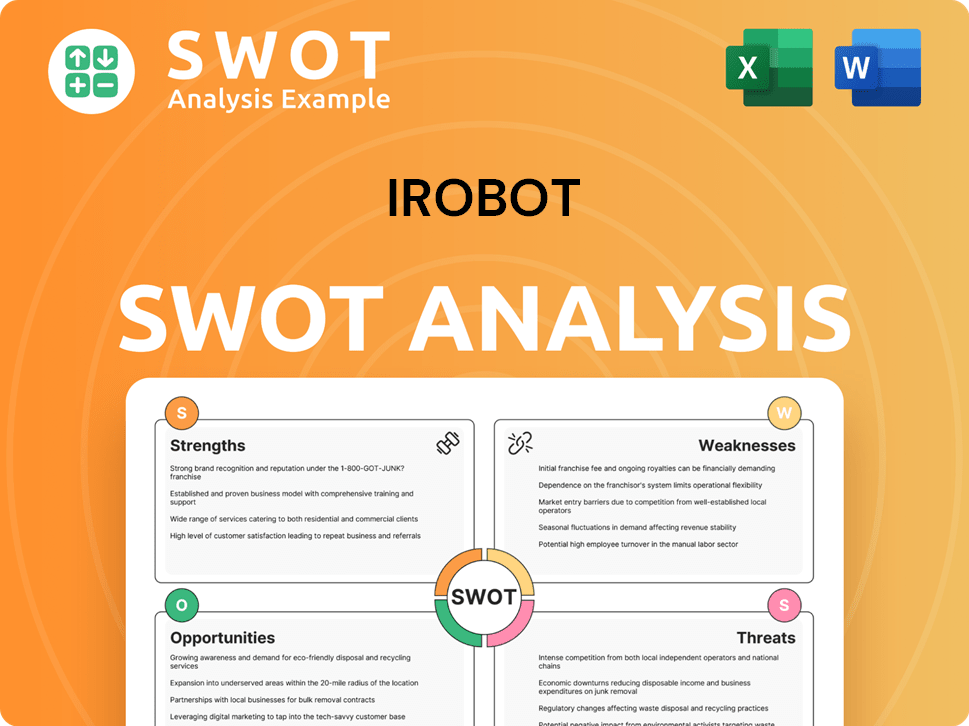
How Has iRobot’s Ownership Changed Over Time?
The ownership structure of iRobot has seen significant shifts, particularly with its status as a publicly traded company. iRobot, which trades on the Nasdaq under the ticker symbol IRBT, has experienced considerable stock price volatility. The stock's journey includes reaching an all-time high of $197.40 on January 27, 2021, and then plummeting to an all-time low of $6.48 by April 25, 2024. As of June 11, 2025, the stock price stood at $3.52, reflecting a market capitalization of $110 million, with 31.1 million shares outstanding. Understanding the dynamics of iRobot owner and the iRobot company ownership is crucial for investors.
A pivotal event in iRobot's ownership history was the proposed iRobot acquisition by Amazon.com, announced in August 2022 for $1.7 billion, or $61 per share. This deal, which would have integrated iRobot's Roomba into Amazon's smart home ecosystem, was ultimately terminated in January 2024 due to antitrust concerns from the European Commission. The collapse of the acquisition led to Amazon paying iRobot a $94 million termination fee. The failed acquisition significantly impacted iRobot's strategy and governance, leading to the departure of CEO and co-founder Colin Angle in January 2024 and the initiation of a strategic review to explore options, including potential sales or strategic transactions. This period highlights the complexities of iRobot's ownership and its strategic direction.
| Metric | Value | Date |
|---|---|---|
| Stock Price (June 11, 2025) | $3.52 | June 11, 2025 |
| Market Capitalization (June 11, 2025) | $110 million | June 11, 2025 |
| Shares Outstanding (June 11, 2025) | 31.1 million | June 11, 2025 |
Major stakeholders in iRobot, as a public company, include institutional investors and individual shareholders. The company's ownership structure has been influenced by significant events, such as the failed acquisition by Amazon. The company's current strategic review and board expansions reflect its efforts to navigate a challenging financial landscape. To understand the competitive environment, one can refer to the Competitors Landscape of iRobot.
iRobot's ownership structure has evolved significantly, marked by its public listing and the failed acquisition by Amazon.
- The stock price has seen considerable volatility.
- The Amazon acquisition's termination led to strategic changes.
- The company is currently undergoing a strategic review.
- Understanding the iRobot parent company and the iRobot company shareholders is key.
iRobot PESTLE Analysis
- Covers All 6 PESTLE Categories
- No Research Needed – Save Hours of Work
- Built by Experts, Trusted by Consultants
- Instant Download, Ready to Use
- 100% Editable, Fully Customizable
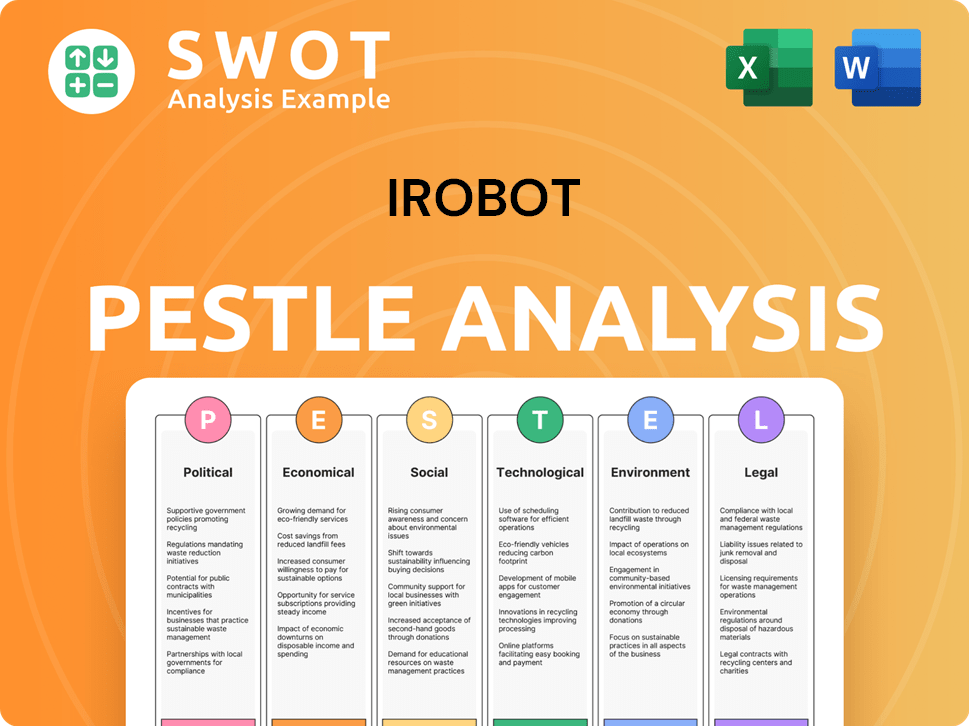
Who Sits on iRobot’s Board?
As of March 2025, the board of directors of iRobot has been updated to include Neal Goldman, the CEO of Sage Capital Investments, who is known for his expertise in turnarounds. This addition is a strategic move as the company undergoes a strategic review. The board's focus is on addressing financial challenges and exploring future options, which may include a potential sale. The board's composition reflects a proactive approach to navigating the company's current situation.
Colin Angle, a co-founder, previously held the roles of CEO and chairman. His departure in January 2024, following the failed Amazon acquisition, marked a significant leadership change. The current board dynamics are likely influenced by these recent shifts, including the termination of the Growth Strategy of iRobot acquisition by Amazon.
| Board Member | Title | Affiliation |
|---|---|---|
| Neal Goldman | Board Member | CEO of Sage Capital Investments |
| Colin Angle | Former CEO and Chairman | Co-founder |
| (Other Board Members) | (Titles Vary) | (Affiliations Vary) |
The voting structure of iRobot, as a publicly traded company, generally operates on a one-share-one-vote basis, which is typical for companies listed on Nasdaq. However, specific details about dual-class shares or special voting rights are not available in the provided information. Major institutional investors often hold significant voting power due to their large shareholdings. The company's current financial difficulties and strategic review could potentially attract activist investor campaigns in the future.
The board of directors has been updated to include Neal Goldman, a turnaround expert. The company is undergoing a strategic review. The voting structure follows a one-share-one-vote principle.
- Board includes a turnaround expert.
- Strategic review is underway.
- One-share-one-vote voting structure.
- Recent leadership changes.
iRobot Business Model Canvas
- Complete 9-Block Business Model Canvas
- Effortlessly Communicate Your Business Strategy
- Investor-Ready BMC Format
- 100% Editable and Customizable
- Clear and Structured Layout
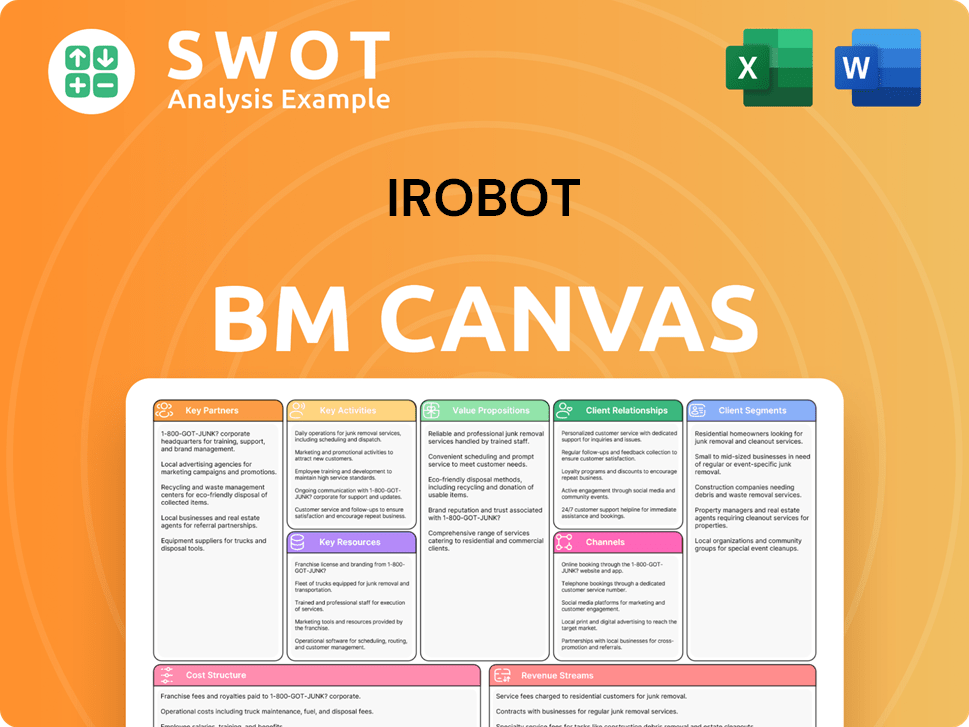
What Recent Changes Have Shaped iRobot’s Ownership Landscape?
The ownership landscape of the iRobot company has seen significant shifts in recent years, primarily influenced by the failed acquisition by Amazon. The e-commerce giant's $1.7 billion bid, announced in August 2022, aimed to integrate iRobot into its portfolio. However, regulatory hurdles, specifically concerns from the European Union regarding potential anti-competitive practices in the robot vacuum market, led to the deal's termination in January 2024. This resulted in Amazon paying a $94 million termination fee to iRobot. This event has reshaped the company's strategic direction and ownership dynamics.
Following the collapse of the acquisition, iRobot has undertaken substantial restructuring. Co-founder and CEO Colin Angle stepped down in January 2024. The company has since implemented significant layoffs, affecting over half of its workforce. Additionally, iRobot initiated a strategic review, exploring options including a potential sale. To aid in this process, the board expanded to include Neal Goldman, a turnaround expert. These changes reflect the company's efforts to navigate financial challenges and reposition itself in the market. For more context, you can check out the Brief History of iRobot.
| Metric | 2023 | 2024 |
|---|---|---|
| Revenue (in millions) | $890.6 | $681.8 |
| GAAP Net Loss (in millions) | N/A | $145.5 |
| Operating Loss (in millions, first nine months) | N/A | $41.9 |
Financially, iRobot has faced considerable headwinds. The company's revenue decreased to $681.8 million in 2024, down from $890.6 million in 2023. The company reported a GAAP net loss of $145.5 million in 2024 and an operating loss of $41.9 million in the first nine months of the same year. These financial difficulties have raised concerns, with iRobot warning in March 2025 about 'substantial doubt' regarding its ability to continue operations unless it can secure refinancing or find a buyer. The company's financial position has been further strained by a $200 million loan taken out in 2023, which carries a higher interest rate. The market capitalization of iRobot is a key indicator of its current valuation, which fluctuates based on the stock price and outstanding shares.
The failed iRobot acquisition by Amazon highlighted increased scrutiny on tech mergers. This led to a renewed focus on internal strategies, especially against competition from Chinese manufacturers. The company is now concentrating on strategies to regain profitability and market leadership.
iRobot's 'iRobot Elevate' strategy aims to reduce operating losses and improve gross margins. The company is committed to leveraging its reduced cost structure and innovative product pipeline to drive profitability, despite ongoing challenges. The board continues to review strategic options.
In March 2025, iRobot launched new floor cleaning robots with lidar navigation. Share buybacks were part of the financial strategy, with approximately $50 million of common stock repurchased in 2021. The 5-Year Share Buyback Ratio was -1.10% as of March 2025.
The possibility of a future sale or strategic transaction remains open. The focus is on reducing operating losses and improving gross margins. The company is working on its innovative product pipeline to drive profitability.
iRobot Porter's Five Forces Analysis
- Covers All 5 Competitive Forces in Detail
- Structured for Consultants, Students, and Founders
- 100% Editable in Microsoft Word & Excel
- Instant Digital Download – Use Immediately
- Compatible with Mac & PC – Fully Unlocked
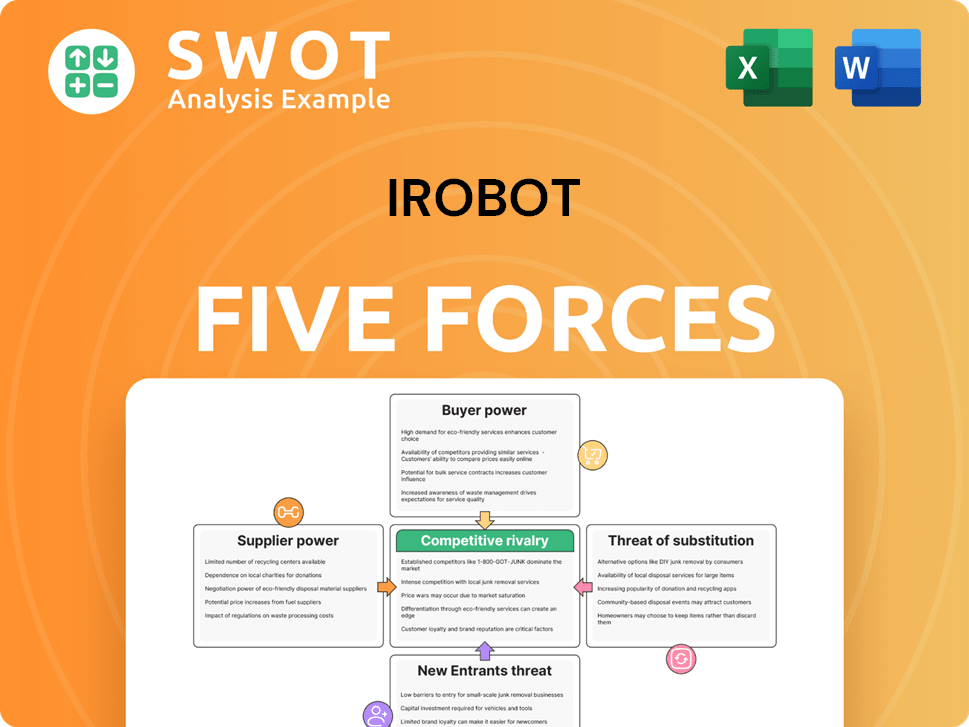
Related Blogs
- What are Mission Vision & Core Values of iRobot Company?
- What is Competitive Landscape of iRobot Company?
- What is Growth Strategy and Future Prospects of iRobot Company?
- How Does iRobot Company Work?
- What is Sales and Marketing Strategy of iRobot Company?
- What is Brief History of iRobot Company?
- What is Customer Demographics and Target Market of iRobot Company?
Disclaimer
All information, articles, and product details provided on this website are for general informational and educational purposes only. We do not claim any ownership over, nor do we intend to infringe upon, any trademarks, copyrights, logos, brand names, or other intellectual property mentioned or depicted on this site. Such intellectual property remains the property of its respective owners, and any references here are made solely for identification or informational purposes, without implying any affiliation, endorsement, or partnership.
We make no representations or warranties, express or implied, regarding the accuracy, completeness, or suitability of any content or products presented. Nothing on this website should be construed as legal, tax, investment, financial, medical, or other professional advice. In addition, no part of this site—including articles or product references—constitutes a solicitation, recommendation, endorsement, advertisement, or offer to buy or sell any securities, franchises, or other financial instruments, particularly in jurisdictions where such activity would be unlawful.
All content is of a general nature and may not address the specific circumstances of any individual or entity. It is not a substitute for professional advice or services. Any actions you take based on the information provided here are strictly at your own risk. You accept full responsibility for any decisions or outcomes arising from your use of this website and agree to release us from any liability in connection with your use of, or reliance upon, the content or products found herein.